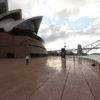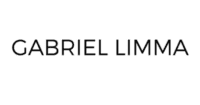1. Immediate Relief
If I don't know what to do because there are too many options, too many information sources, I go either for a long walk or for a tennis practice/match.
In general, any type of physical exercise is anxiety-relieving and a powerful tool to improve clarity.
It's no coincidence that most writers take walks every day.
Strategy and Tactics
2. The One Thing
I ask myself, "What is my main goal with this project?"
Then I write down as many answers as they come to mind.
Following that, I refined these responses and ordered them from most important to least important.
This helps me get clarity about my priorities.
Anything that will not help me achieve my one goal must be left aside.
Focus on what matters most.
Reviewing the book "The Paradox of Choice" by Barry Schwartz, Derek Sivers notes:
"Most good decisions involve these steps:
1. Figure out your goals
2. Evaluate the importance of each goal
3. Array the options
4. Evaluate how likely each of the options is to meet your goals
5. Pick the winning option
6. Later, use the consequences of your choice to modify your goals, the importance you assign them, and the way you evaluate future possibilities.
That is it.
PS: The best book I know about this topic is "The One Thing," by Gary Keller.
3. Define a deadline
When we don't have a deadline, our brains tend to think we have an endless amount of time. We tend to search for perfection, while we should aim for excellence—the best we can do within that limited amount of time.
4. Write down a list of sources and stick to it
As the number of information sources grows, the negatives escalate until we become overloaded. At this point, choice no longer liberates but debilitates.
After many years of suffering with the paradox of (too many) choices, I've learned (and am still learning) to write a draught of any project, take a limited time to research sources, write them down, and stick to it.
If the quality of our work, in the end, is not compatible with our goals, our client's standard, our own standard, we can re-evaluate it, we can can add new sources of information, new or different points of view.
Remember: 5 reputable sources of information are better than 35 sources of information.
4 Multitasking is a trap
Tactics to avoid multitasking:
- Time blocking. Time block our time to focus on our one thing.
- Also, time block a certain amount of time to plan our next week.
- Work without distractions. No tv, no cellphone, no talking.
5 Bird by bird
In her book "Bird by Bird: Some instructions on writing and life", Anne Almott writes:
"Thirty years ago my older brother, who was ten years old at the time, was trying to get a report on birds written that he'd had three months to write. [It] was due the next day. We were out at our family cabin in Bolinas, and he was at the kitchen table close to tears, surrounded by binder paper and pencils and unopened books on birds, immobilized by the hugeness of the task ahead. Then my father sat down beside him, put his arm around my brother's shoulder, and said. 'Bird by bird, buddy. Just take it bird by bird.'"
With the insurmountable quantity of information available online, many of us, myself included, tend to believe we need to explore and cover all the relevant sources available, when we have to deliver any project that demands some research.
We can't miss any of them. This might be extremely anxiety-producing. Any of these projects might generate an overwhelming feeling.
But no.
As we've seen previously, we don't need to cover all the sources available.
And we don't need to produce the whole project all at once. We need to put one brick on top of the other.
We just need to take it bird by bird.
6 The power of handwriting, hand scheming, hand sketching
In 1997, in my senior year at law school, my then boss asked me to help him elaborate on an answer to the most important lawsuit under our firm's responsibility. It was an action pending since 1954. Fifteen physical volumes, 6000 pages long. He threw out 4 or 5 ideas and asked me to prepare an answer.
I didn't know where to start from.
I mean, at that time I already knew I should start from the end.
Yes, whenever you need to read either a court decision or the records of a court case, start from the end. Read what has been decided lately. That will indicate what you need to do.
I didn't know, however, which were the controversial questions, the key issues in that legal case.
Six thousand pages.
I took notes of the all the theses, dates, documents, and questions I found relevant. This allowed me to hand sketch a seven page draft with our key thesis. Handwriting it allowed not only to memorise details about dates, documents, incongruences but also to see the big picture.
Benefits of handwriting, hand sketching
1. Writing by hand and hand sketching are useful for visual learners.
Writing longhand notes gives us the graphic freedom to easily sketch an infographic, word web, or another non-traditional layout to put your thoughts down and visualise connections.
2. Writing by hand and hand sketching boost the learning process.
Psychological science research conducted by researcher Daniel Oppenheimer at the University of California shows that handwritten notes help with memory and recall. Oppenheimer’s study shows that areas of the brain associated with recall and comprehension are more engaged when students write notes with a pen and paper.
3. Writing by hand hand sketching help us avoid distractions.
Technology can be an incredibly time-consuming and distracting part of our lives. Delivering any project requires focus, and shutting out distractions is an obstacle for many professionals. Writing or sketching longhand away from online devices can help us focus on actual work.



